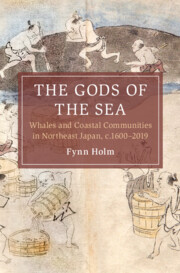We estimated the long-term vertical velocity profile across the northeastern Japan forearc by using the height distribution of late Quaternary marine and fluvial terraces, and we correlated the ages of the two marine terraces with marine isotope stages (MIS) 5.5 and 5.3 or 5.1 by cryptotephra stratigraphy. The uplift rate, estimated as 0.11–0.19 m ka− 1 from the relative heights between the terrace surfaces and eustatic sea levels, was nearly equal to, or slightly slower than, the uplift rate farther inland (0.15–0.19 m ka− 1), as determined from the relative heights of fill terrace surfaces. In contrast, the short-term vertical velocity profile, obtained from GPS observations, showed that the forearc is currently subsiding at a maximum rate of 5.4 ± 0.4 mm yr− 1. Thus, the current short-term (geodetic) subsidence does not reflect long-term (geological) tectonic movement. Short-term vertical deformation is probably driven by subduction erosion or elastic deformation caused by interplate coupling, or both. However, long-term uplift is probably due not to moment release on the mega-thrust but to crustal thickening.


